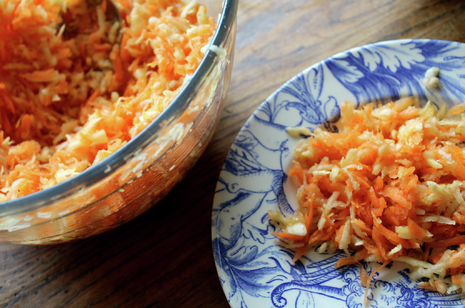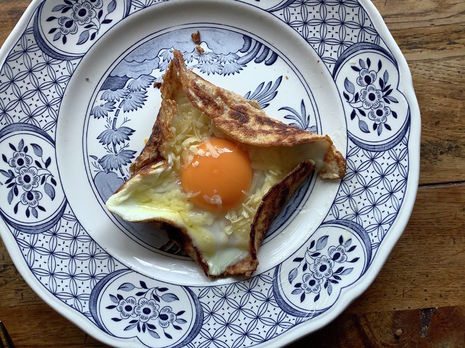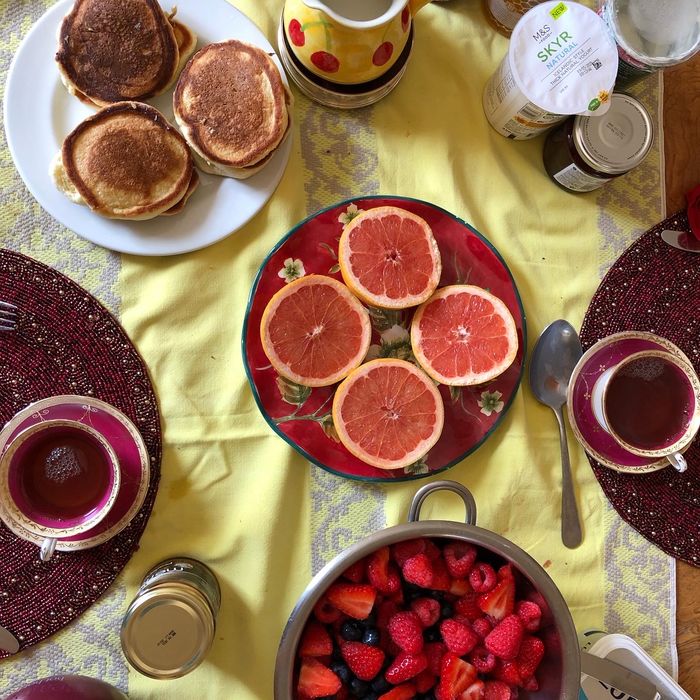Tastes that transport…
Flora Bowen reminisces on the recipes that defined her year abroad and explores the comfort that cooking can provide.

Content Note: This article contains a brief mention of lockdown and the coronavirus pandemic.
Paris can keep its museums, its coachloads of tourists: Lyon, the gastronomic centre of France – and by extension the world, (according to its residents) boasts the best of French cuisine, and some of the finest wines in the world. This food culture was one of the main reasons I chose to study there for my year abroad at the Ecole Normale Superieure, and it was the tastiest semester of my life.
My French flatmates could make gratin dauphinoise in a microwave and confidently discuss wines, and it was this attitude towards the pleasures of eating that inspired me to become a boulangerie regular, queuing at lunchtime for fresh quiches and baguettes, and even spending Saturday mornings sampling cheese at the market by the side of the Rhône.
When the lockdown confined us to the kitchen table in our cramped student accommodation, we celebrated by making tarte tatin - the thinly sliced apple sweetening the situation as Macron announced more and more depressing measures.
Now that I've prematurely returned to the north of England, I find myself longing for those days again. Cooking has been my imperfect, delicious solution, and I thought I would share the recipes that have helped transport me back to those golden days.
Cake Salé
The first time I had a savoury cake in Lyon was at the university’s annual gala (basically a glorified rave-cum-school disco in an overheated gymnasium). The upside was the food, and in particular the savoury cakes.
All you need is a basic batter, and you can experiment with the fillings. I’ve suggested ingredients for a vaguely Greek lunch cake. Using half flour and half polenta creates a little more texture and saves flour which is scarce at the moment.
Ingredients: 4 eggs, 150 ml olive oil, 250g flour, 100 ml milk, 50g yoghurt, 2 tsp baking powder.
Then you have around 310-330g left to play with. I suggest 200g courgette, 100g feta, and 30g sundried tomatoes. Quantities aren’t important; the beauty of these cakes is that you can chuck anything in. Classic French versions include ham and cheese, or tuna.
- Preheat oven to 180c, and line a loaf tin.
- Mix flour and baking powder in one bowl with your chosen ingredients.
- In another bowl, whisk the eggs until they are white and just hold their shape, then gradually add in the rest of the liquid ingredients using a plastic spatula or spoon to avoid over-mixing. Try drawing a z-shape to combine the two mixtures.
- Bake for 30-40 minutes.
"Making these recipes has sweetly dispersed the disorientation of leaving France so quickly."
Carottes râpées
All things sound sexier in French, and this recipe proves it: how much fun would grated carrots sound otherwise? But add this dressing, and the pandemic party will be in full force. This cold salad is available in all French supermarkets, but it’s also very easy to make at home. I have a strong addiction to vinegar, but I've managed to restrain myself here from suggesting the whole bottle.
Ingredients: 2 medium carrots, 1 lemon and lemon zest, 4-5 tablespoons olive oil, 2 tbsp apple cider vinegar, parsley.
- Grate carrots into a bowl, and mix with the dressing. Finish with finely chopped parsley.
France colonised parts of Morocco in the 20th century, and Morrocan cuisine retains strong influence over Marseille. For a Moroccan flavour, add some cumin and perhaps pomegranate. For more variety, grate in half a chicory, and one cooking apple.
Crêpe complète
One of my friend’s flatmates used to make this for his girlfriend. He was a very intense philosophy student, so now I associate cracking eggs into flour with making ironic jokes about Heidegger.

Ingredients: 2 eggs, 125 wholewheat flour, 30ml milk (preferably full fat), ½ tsp baking powder. For the filling: salt and pepper; grated gruyère cheese to preference; slice of ham and 1 egg per crêpe.
- Mix the flour, and baking powder together, in a bowl or on a clean surface.
- Make a well in the centre, and crack the eggs into it.
- Whisk the eggs in, reflect on Sartre’s L’être et le néant to nobody in particular.
- Add in milk little by little to keep the batter from thickening too much.
- Leave to rest overnight, or at least for a couple of hours.
- When ready, fry 2-3 tablespoons at a time, depending on pan size, with a little butter.
- Swirl the mixture a little to ensure a neat distribution in the pan and cook until it’s easy to flip on both sides.
- When ready, pop a slide of ham in the centre, then slip the egg out onto the ham, and sprinkle the cheese equally around the egg.
- When the egg white is set and the cheese is melted, fold in the corners of the crêpe so that the egg peeks out of a tidy square.
With all the comfort of a smooth batter coddling a wooden spoon, making these recipes has sweetly dispersed the disorientation of leaving France so quickly. At first, sadness was the main ingredient: the slow sorrow of saying goodbye to the country and its people, which I had so longed to be a part of. Cooking has let me feel that I belonged back there again.
 News / Caius mourns its tree-mendous loss23 December 2025
News / Caius mourns its tree-mendous loss23 December 2025 News / Clare Hall spent over £500k opposing busway 24 December 2025
News / Clare Hall spent over £500k opposing busway 24 December 2025 Comment / The ‘class’ of Cambridge24 December 2025
Comment / The ‘class’ of Cambridge24 December 2025 Comment / Yes, I’m brown – but I have more important things to say22 December 2025
Comment / Yes, I’m brown – but I have more important things to say22 December 2025 Interviews / Politics, your own way: Tilly Middlehurst on speaking out21 December 2025
Interviews / Politics, your own way: Tilly Middlehurst on speaking out21 December 2025








